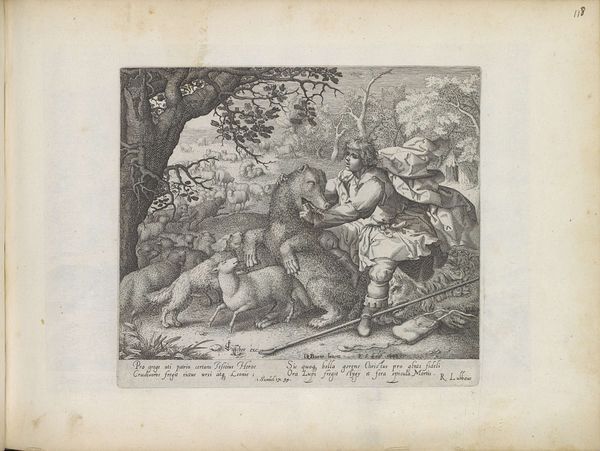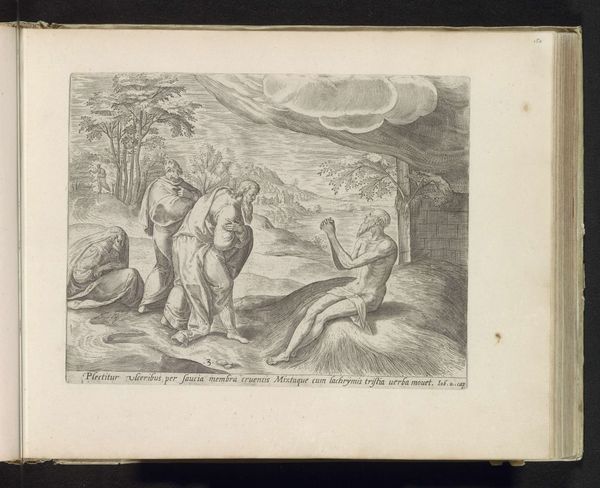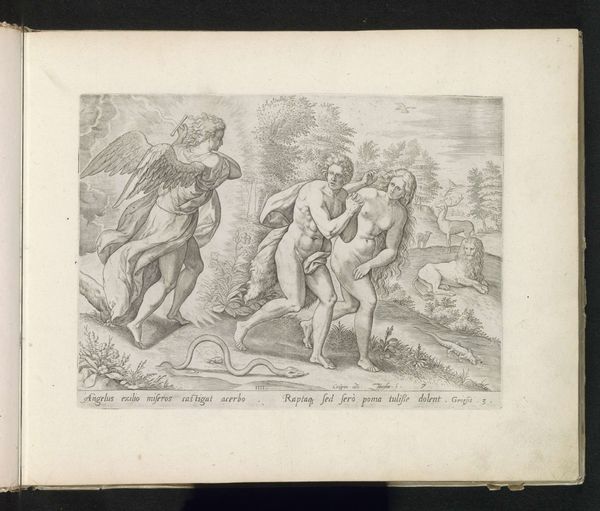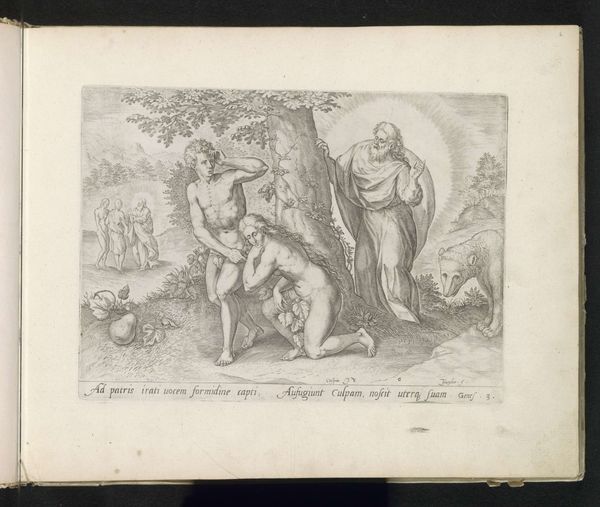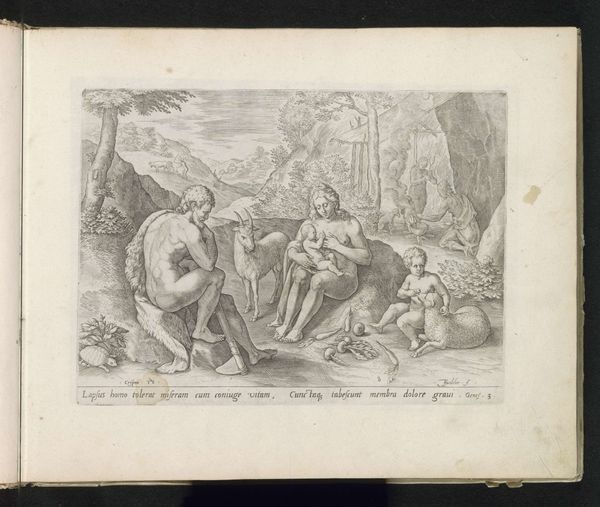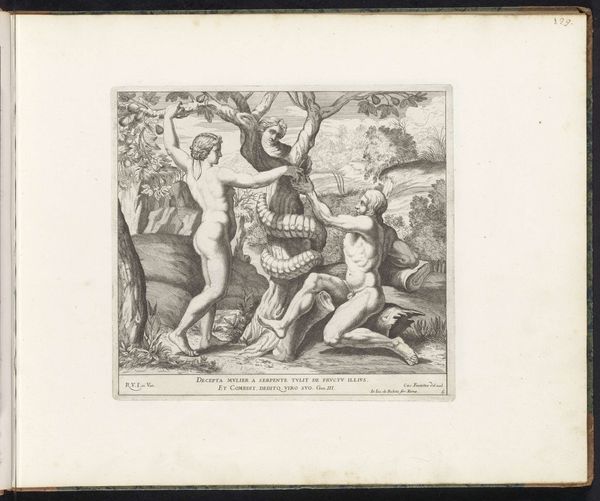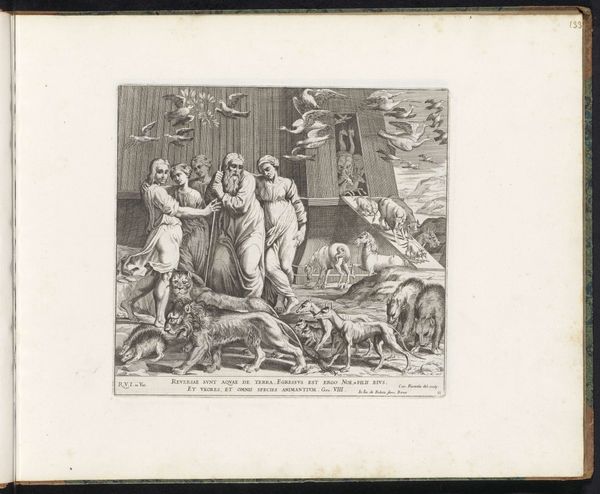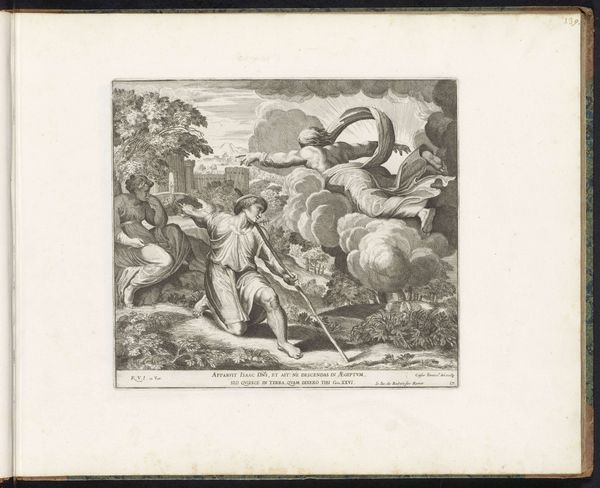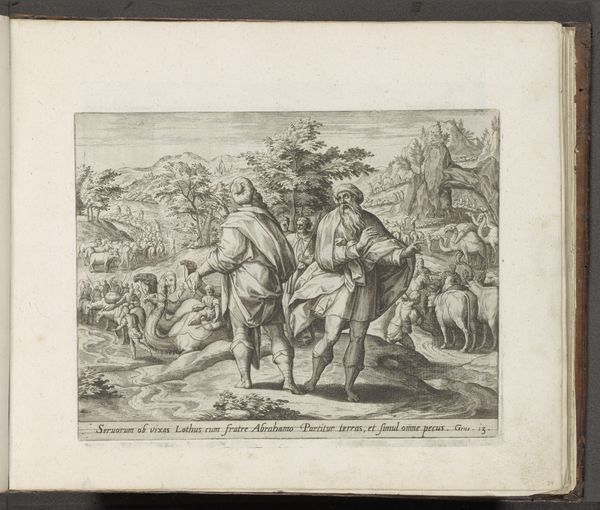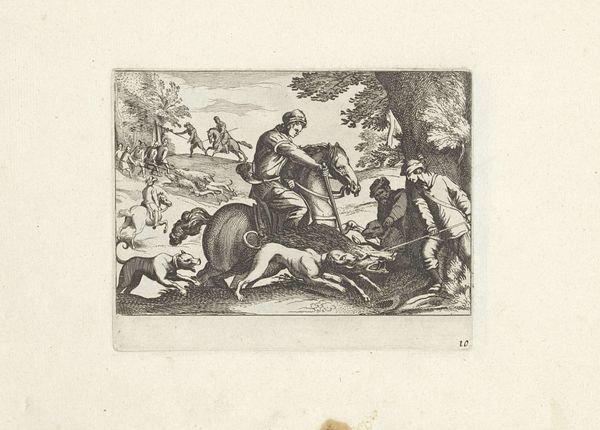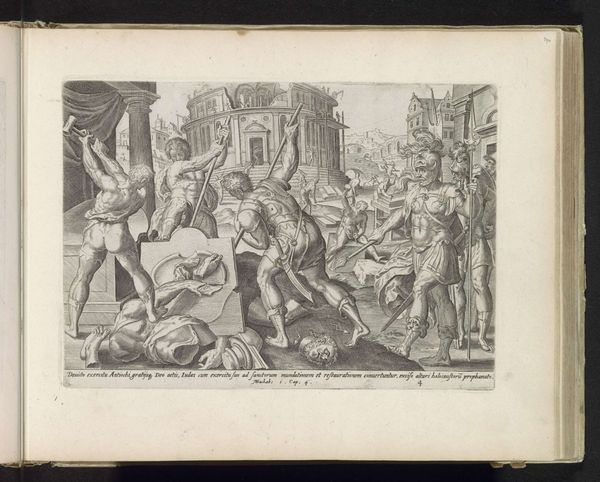
print, engraving
#
narrative-art
#
baroque
# print
#
figuration
#
history-painting
#
engraving
Dimensions: height 238 mm, width 258 mm
Copyright: Rijks Museum: Open Domain
Cesare Fantetti made this engraving, "Adam and Eve after the Fall," sometime between 1660 and 1675. The print depicts Adam and Eve's life after being expelled from the Garden of Eden, an event that had a profound impact on Christian theology and European culture. In the 17th century, the dominant artistic and cultural institutions, such as the Church, frequently employed images like this to impart religious and moral teachings. Fantetti uses visual symbols and historical links to provide meaning. Adam is shown toiling, while Eve is depicted with their children. The artist is referencing the concept of original sin and the subsequent hardships of human existence, according to Genesis. To fully comprehend this work, we may look into religious history, 17th-century European social ideals, and the function of art in conveying moral teachings. Understanding the artwork needs a deep dive into social and institutional backgrounds.
Comments
No comments
Be the first to comment and join the conversation on the ultimate creative platform.
